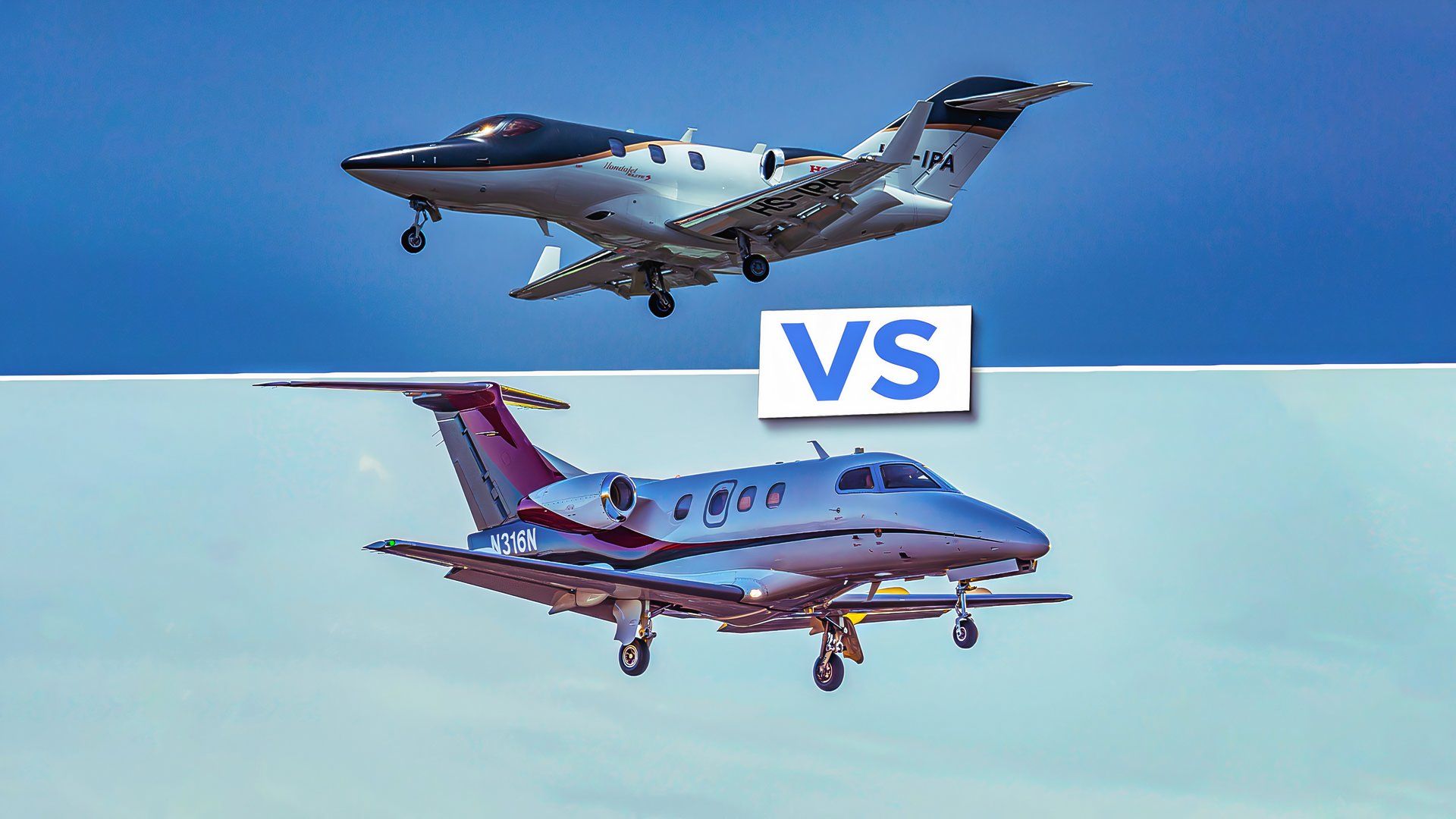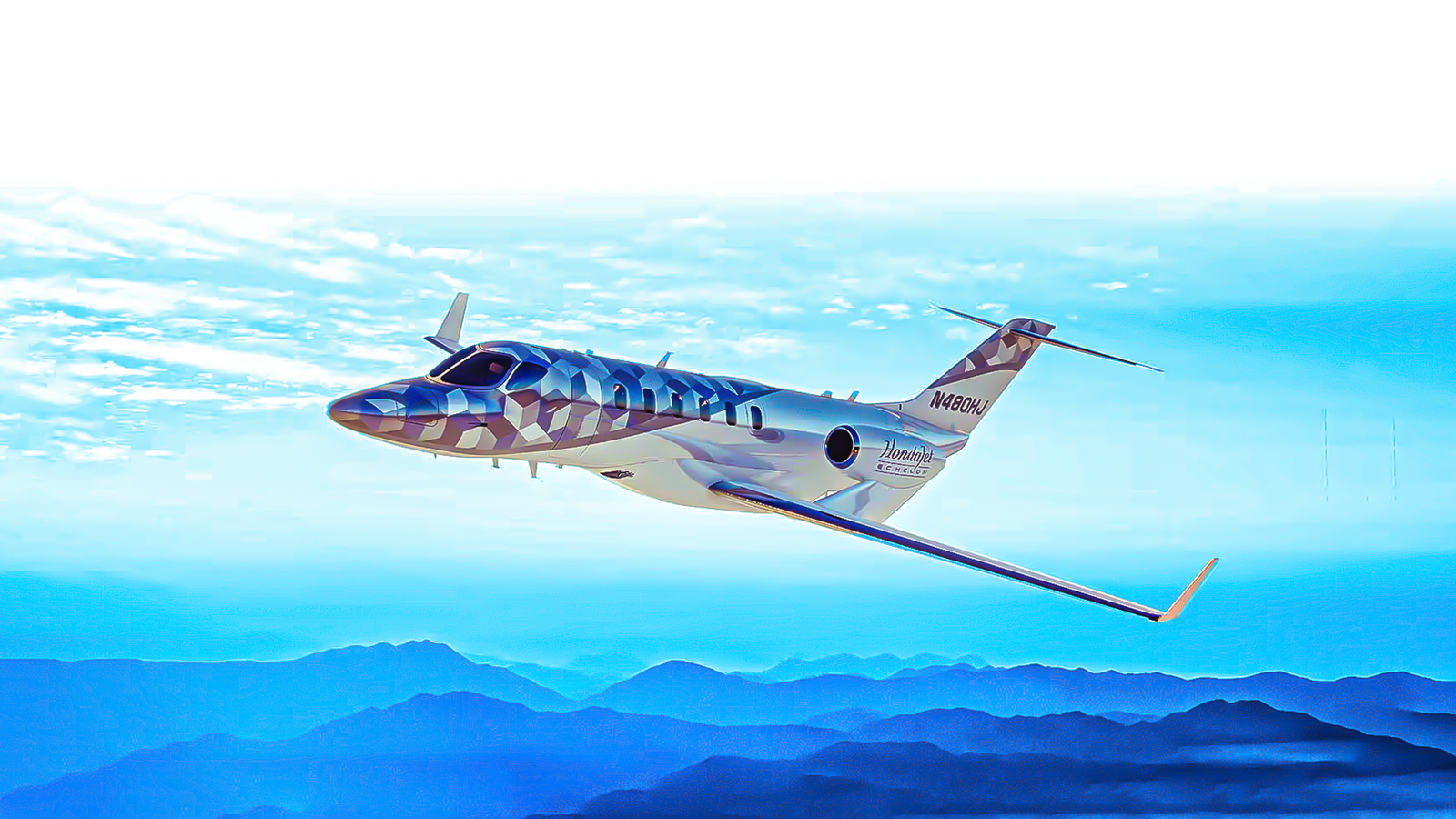The newest model of HondaJet
, the HA-480 Echelon, is a next-generation aircraft that can fly across North America. A maximum cruising speed of 450 KTAS, a planned range of 2,625 NM, and a service ceiling of FL470 are all anticipated of the upcoming model.
Since making its debut at the 2023 NBAA-BACE event and expected to be certified in 2028, it has been quite popular with charter companies and private buyers. Maintaining the Honda Aircraft Company
, LLC (HACI) over-the-wing engine mount, the Echelon’s design places it in the same family as the original HA-420 but places it in a larger, faster class.
According to Twin & Turbine, “This new jet isn’t simply a stretched HondaJet—it represents a clean-sheet design, sharing only a few characteristics like the OTWEM engine configuration and Garmin G3000 avionics.”
The Echelon has a spacious cabin that can accommodate up to eleven people and a 120 cubic foot extended luggage area. This strategy is a result of Honda’s long-standing ambition to advance business aviation.
“Capable of nonstop transcontinental flight across the United States, the HondaJet Echelon is a first-of-its-kind light jet, enhancing travel efficiency in every aspect while delivering the premium comfort and convenience typically reserved for larger aircraft,” says the official Honda website.
It goes on to say, “It features generous legroom, the tallest cabin height, and a class-leading cabin altitude of 6,363 ft.”
The flying Honda
Global sales of business jets have remained steady at around 700 annually in recent years, with a slight slowdown due to travel restrictions during the pandemic. HondaJet holds a 40% share of the very light jet market, which is jets that can accommodate four to eight people.
The annual sales volume of the very light jet market is less than 10% of the entire business jet market, or around 60 planes across the entire industry. Honda Aircraft plans to increase its sales by entering the market with the HondaJet Echelon, which can accommodate around 10 people.
“The technology we have developed as an automobile company will be an advantage for us,” Honda Aircraft Company President Hideto Yamasaki said in 2024 to Japan News.
He went on to say “We would like to emphasize the Echelon’s advantage in terms of high fuel efficiency and market it to those who are also interested in decarbonization.”
Honda reportedly invested $55.7 million to develop the Echelon. By 2028, the budding aircraft maker aims to sell 60 HondaJet small business aircraft a year, which is almost three times as many as it did in 2023.
Tough market
The big boom in general aviation started in the 1970s, with over 10,000 airplanes per year being manufactured, building to a peak in 1979 when just short of 18,000 were delivered. The FAA
‘s crystal ball in the 1970s was no better than the manufacturers’ outlook, and the official forecast for the years 1979 to 1990 predicted fast growth with the general aviation fleet growing from 186,000 airplanes to 310,800 by 1990, which proved optimistic by more than 110,000 units.
Previously referred to as a microjet, small jet aircraft that are authorized for single-pilot operation are currently referred to as Very Light Jets (VLJ) or Entry Level Jets (ELJ). The maximum take-off mass (MTOM) of a typical VLJ/ELJ is less than 4,500 kg, and it usually seats fewer than 10 passengers.
J. Mac McClellan of Fyingmag.com describes the future of the VLJ market:
“For the past few years, a new version of the technology-driving-new-airplane-deliveries’ rosy forecast has been in play and it is based on development of new very light jets (VLJ) that are predicted to cost little more than a piston airplane, less than a turboprop, and will be so economical to fly that thousands will be used in a new on-demand air taxi service.”
The HondaJet and HACI’s goal is to expand the VLJ market into not just a substantial segment of the aviation market, but a class of aircraft that changes the world of flying.
Paradigm changer
Since its inception, HACI has made it its goal to bring fresh value to the industry. Making the HondaJet more representative of Honda’s identity and launching the Honda brand in the market has been HACI’s next major accomplishment as a newcomer to the aviation sector.
“The HondaJet Echelon was born to create a new category that transcends the travel experience on conventional light jets,” said Yamasaki in an Aviationweek report.
“Expanding mobility skyward has been Honda’s long-lasting dream, and the HondaJet Echelon marks the exciting next chapter while showcasing a classic Honda story of a product that creates a new value for people.”
Through three model upgrades over the course of seven years, HACI improved performance, comfort, and safety in order to continue meeting consumer demands. The Hondajet Echelon is set to be the next evolution and embodies Honda’s ambition to provide “the joy and freedom of mobility in the sky.”
Currently, over 70% of the business jet market is in the United States. Transcontinental flights without refueling are essential for satisfying consumer demands and complement Honda’s mission to provide more ecologically friendly air travel.
During a normal mission, the Echelon will have a fuel efficiency advantage of up to 20% over average light jets and over 40% over typical midsize jets. HAIC President Yamasaki commented that his company has heard many customers ask, “Can an aircraft of this size really cross the United States?”
He has every confidence in not only his plane but also his team. Yamasaki has been a firm believer in bottom-up leadership, encouraging every member of HAIC to share ideas and take pride in their collaborative efforts to produce a jet unlike any other.
In Japanese, Honda’s basic philosophy is written literally as “Respect for People,” but in English, it is translated as “Respect for the Individual.”
In his own words, Yamasaki’s vision is that “the aviation business [will become] the pillar of Honda, so that one day in the future, people will say: Honda used to be a car and motorcycle company.”
As the new Echelon is set to take flight next year, we will wait with great anticipation to see the latest iteration of Honda’s bold project.

Related
Very Light Business Jet Dominance: Comparing The Embraer Phenom 100 And The HondaJet Elite
A comparison between the Embraer Phenom 100 and the HondaJet Elite.
By the numbers
HondaJet Echelon’s avionics suite is based on the Garmin
G3000 platform, providing a seamless transition for existing pilots. The system includes Autobrake, which allows pilots to select automated brake force during takeoff and landing, and Emergency Autoland, which autonomously controls and lands the aircraft without human intervention.
Autothrottle functionality reduces pilot workload by automating power management based on flight characteristics, resulting in more precise and efficient performance. The system also includes a Runway Overrun Awareness and Alerting System that considers runway surface conditions and airplane approach speed to predict stopping distance and alert pilots to overrun conditions.
The Advanced Steering Augmentation System (ASAS) detects changes in aircraft yaw rate and provides directional assistance to nose wheel steering, improving handling and safety. For all the details, look below for the official specifications for the HondaJet HA-480 Echelon.
These figures come directly from the HondaJet Echelon page to illustrate the jet’s exceptional performance:
- Powerplant: two (2) Williams International FJ44-4C turbofans
- Maximum Cruise Speed: 450 KTAS (834 km/h)
- Max. Cruise Altitude: FL470
- NBAA IFR Range (1 crew + 4 pax): 2625 NM (4862 km)
- Takeoff Distance: 3300 ft (1006 m)
- Landing Distance: 2550 ft (777 m)
- Length: 57.79 ft (17.62 m)
- Wing Span: 56.72 ft (17.29 m)
- Height: 15.86 ft (4.84 m)
- Cabin Length: 25.38 ft (7.74 m)
- Cabin Width: 5.08 ft (1.55 m)
- Cabin Height: 5.21 ft (1.59 m)
- Baggage Space: 120 cubic ft
- Maximum Occupancy: 1 crew + 10 pax (or 2 crew + 9 pax)
Skyward ambitions
Honda began basic research on aircraft in 1986, with the goal of developing a light aircraft that combined advanced aircraft technologies. The project was led by Michimasa Fujino, who moved to the United States to study aeronautical technologies. The first six-seat experimental light jet, the MH-02, was completed in 1993, and the idea of mounting engines over the wings was conceived four years later.
The first flight of the HondaJet was successfully completed in 2003, marking a rare milestone. However, commercialization was considered difficult due to the lack of precedent for an entry into the aviation industry from another industry. In 2005, Honda’s first public appearance at EAA AirVenture Oshkosh was a turning point, with the HondaJet gaining attention and being green-lighted for commercialization in March 2006.
Fujino was appointed as the first president of HondaJet, and the company faced numerous challenges in obtaining type certification. After completing design reviews, durability checks, and multiple tests, HondaJet obtained its type certification in 2015. Despite these challenges, HondaJet was successfully commercialized three decades after its launch.
In 2022, Fujino retired, and Hideto Yamasaki assumed the position. In 2024, Fujino became the first Japanese to receive the American Institute of Aeronautics and Astronautics (AIAA) Daniel Guggenheim Medal. Since 2015, HondaJet has been delivered 250 aircraft (as of February 2024).





